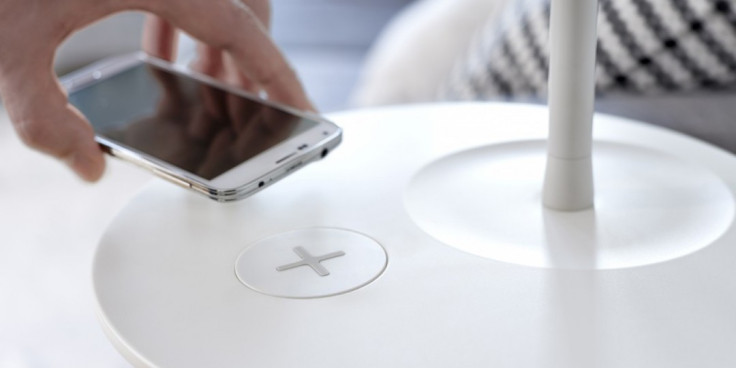Samsung and Ikea help wireless charging surge into the mainstream

This will be the year that wireless charging goes mainstream, as both Samsung and Ikea announced within hours of each other that they will adopt the technology in a big way.
But charging your phone by simply placing it on a special plate is far from a new concept. In the last four years more than 50 million devices with wireless charging - specifically with the Qi (pronounced 'chee') standard - have shipped to consumers the world over.
Both Samsung and Ikea, along with 200 companies including phone makers and car manufacturers, are members of the Wireless Power Consortium (WPC). Ryan Sanderson of AirCharge, a partner of the WPC, told IBTimes UK that the announcements, made at Mobile World Congress in Barcelona, have taken Qi wireless charging "to the edge of an acceleration phase".
Reaching critical mass
Integrating the technology with the Galaxy S6 and S6 edge, and a wide range of Ikea products, including tables and lamps, will take the technology to the stage of "critical mass and mass adoption", Sanderson said.
But getting to this stage has been a slow process, held back not only by development times, but also by a lack of consumer awareness. "We still get people, even here at a technology show, coming over and asking what it is and they're amazed by it," Sanderson said. "As that consumer interest grows it's going to open up a market that's already available, that's already out there and has been tried and tested."
Hours before Samsung unveiled its two new smartphones, flat-pack furniture giant Ikea announced its new range of Qi wireless charging-enabled products. Already built and to go on sale in Europe and the US in April, the range includes desks, lamps, coffee tables, bedside tables and more.
The Swedish company also sells the charging pads on their own, along with circular drill bits which can be used to cut a hole in your current furniture, into which the charging pads can be installed.
Wireless tablet charging coming in six months
The pads currently charge at five watts - the same as almost all smartphone wall chargers, with the Galaxy S6 a rare, more powerful exception - and Sanderson says the technology will, in the next six months, grow to boost this power to 15 watts. At this output, gadgets like iPads and other tablets can be charged wirelessly at the same speed as being plugged into the wall.
Fast-charging smartphones like the S6 will also charge wirelessly as fast as they do when plugged in - in the Samsung's case this means giving the phone enough power for four hours' use in just 10 minutes.
Beyond charging our personal gadgets, Qi charging can deliver up to two kilowatts of power - leading to the development of powerful charging pads integrated into kitchen worktops to power blenders and kettles without the need for any visible cables.
Hiding below the radars of most consumers for several years, Qi wireless charging can already be found on a range of Lumia handsets, as well as the LG G3 and some Google Nexus phones. The technology used by Ikea is the same as that recently rolled out to select McDonald's branches across the UK.
Examples like McDonald's mean there will be a surge in public places to wirelessly charge your smartphone, and although there are currently just 3,000 public Qi charging locations globally, this is expected to increase rapidly in the coming months and years. A number of car manufactures are also members of the WPC and are expected to bring wireless charging to their vehicles soon.
Contactless charging through the air
Sanderson also told IBTimes UK how Qi charging can work without direct contact. Called resonate charging, the limit is just 20mm of air between the power transmitter and receiver, but this is expected to increase as the technology matures.
Wireless charging can be scaled up or down as manufacturers see fit, and is already used for smartwatches like the new Huawei Watch and LG Watch Urbane. The coils take up very little space and cost the manufacturer "a single dollar figure" to install.
Wireless charging is now mainstream - and after years of below-the-radar development, it is already a mature technology capable of adding a new dynamic to smartphones, tablets, kitchen equipment and even furniture.
© Copyright IBTimes 2025. All rights reserved.






















